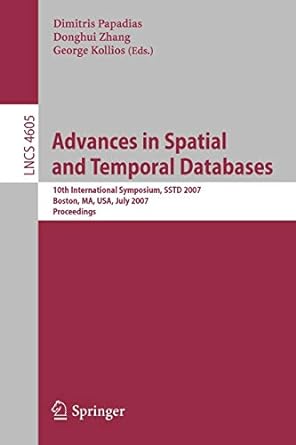Answered step by step
Verified Expert Solution
Question
1 Approved Answer
Tree specifications Node representation You may use either a C struct type or a C + + class to define the employee node. The key
Tree specifications
Node representation
You may use either a C struct type or a C class to define the employee node. The key member
of a tree node representation is the children node array. For practicing the pointer use in this
assignment:
You must use a double pointer for specifying the children node array.
o eg EmployeeNode children;
P a g e
o Do NOT use any collection data structure from the STL standard template
library such as vector, list, etc.
Violating the above requirement would result in a zero point for a assignment.
You may add other data members to your node structure as you see needed, such as a
member for employee ID as a string use any available string type from libraries for
what you like node level, etc.
Programming tips:
o Sample code for instantiating a double pointer array,
children new EmployeeNodenumOfChildren; C
children struct EmployeeNode
mallocnumOfChildrensizeofstruct EmployeeNode; C
o As a best practice, after instantiation, always explicitly initialize all child
pointers to NULL or nullptr. And in C and C it is always a best practice to
explicitly initialize all variables before using them.
The run in one environment but not in another problem is often
caused by non or improper initializations.
Tree operations
Implement the following tree operations with the specified logic Return type and function
name can vary, but pay attention to the requirements below:
First, using iterative or recursive implementation is your choice.
bool addEmployeesconst char employeeIDPath;
o You are required to use const char for the employee ID path argument, you
need to use C string manipulation to parse and extract information from the
employeeIDPath.
You must not use std::string for parsing this argument in the function.
Violating this requirement would result in a deduction of your a
grade.
You may use std::string in other contexts of your program, eg at the
end of the Appendix see below std::string is used for reading in lines
from a text file.
o Note this signature is for a member function in a C node class; if you are
using C you would need to add an argument for specifying which node to start
with, eg:
bool addEmployeesstruct EmployeeNode curNode const char
employeeIDPath;
Similarly, this applies to other functions below.
o Logic:
Starting from the current node, insert employee nodes identified along
the employee ID Path to the tree, stop if the employeeIDPath cannot
be parsed further due to bad format or reaching the end of the path
or reaching beyond the total number of levels specified from the file
for building the org chart see below the orgchart.txt file
Inserting an employee node at a child location of a node is to create a
new employee node and assign the newly created node to the location.
P a g e
Each employee node should also have an employee ID as a string set
to it see the sample invocation below on what the employee ID should
be set.
o The employee ID path argument should contain a series of single digit integers
separated by an underscore, eg with each number representing the
child index at the appropriate level starting from the current node, and they
are zero based.
Each index must be within the max number of children allowed for the
level minus as indices are zero based. And assume each index is
within a single digit range
The max allowed number of children for each level will be from
the file specified in the first command line argument see
below orgchart.txt in compilation and execution section
If an index is outside the allowed range or is not a digit, stop the adding
process and return.
Note the added nodes so far will stay.
o Sample invocation with employee ID path as :
The digits in the path are zero based indices of the child array for the
levels.
Starting from current node, add or insert an employee if it is NOT
added yet as th child of the current node and set its employee ID
string to e then add an employee as the nd child under employee
e and set its employee ID to e then add an employee as the rd
direct report under employee e and set its employee ID to
e
Note: the head root node of the org chart should always have an
employee ID as e
Always check if the child index is within the child index range for the
level before creating and adding the child employee node.
See above.
Always check if the number levels that is traversed has exceeded the
total number of levels from the org chart file.
When called on the root head node, employeeIDPath should contain
the full employee ID path to be added.
EmployeeNode findEmployeeconst char employeeIDPath;
o Logic:
find and return the employee node in the org chart based on an
employee ID path eg
See above for the elabora
Step by Step Solution
There are 3 Steps involved in it
Step: 1

Get Instant Access to Expert-Tailored Solutions
See step-by-step solutions with expert insights and AI powered tools for academic success
Step: 2

Step: 3

Ace Your Homework with AI
Get the answers you need in no time with our AI-driven, step-by-step assistance
Get Started


